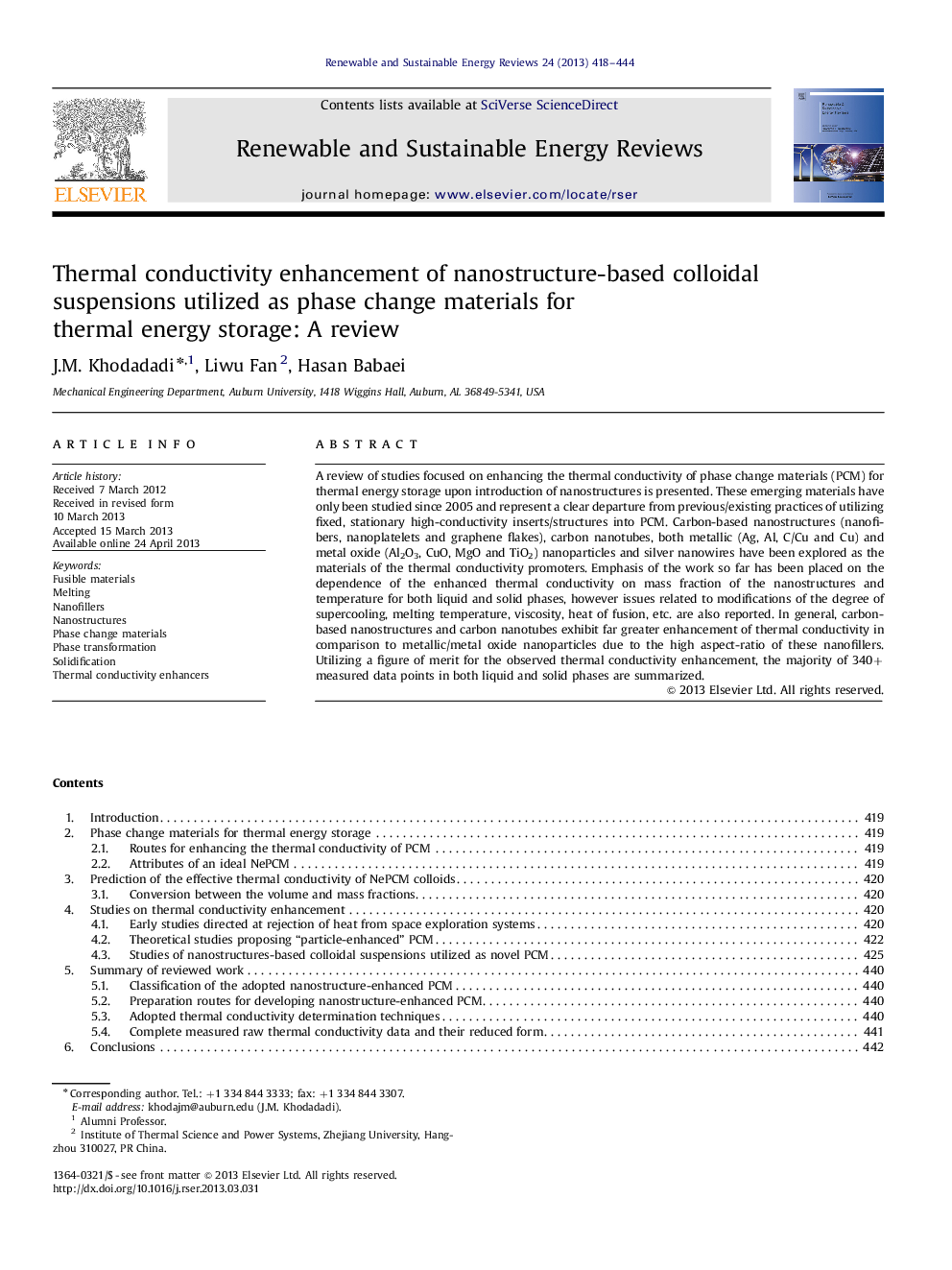| Article ID | Journal | Published Year | Pages | File Type |
|---|---|---|---|---|
| 1750231 | Renewable and Sustainable Energy Reviews | 2013 | 27 Pages |
A review of studies focused on enhancing the thermal conductivity of phase change materials (PCM) for thermal energy storage upon introduction of nanostructures is presented. These emerging materials have only been studied since 2005 and represent a clear departure from previous/existing practices of utilizing fixed, stationary high-conductivity inserts/structures into PCM. Carbon-based nanostructures (nanofibers, nanoplatelets and graphene flakes), carbon nanotubes, both metallic (Ag, Al, C/Cu and Cu) and metal oxide (Al2O3, CuO, MgO and TiO2) nanoparticles and silver nanowires have been explored as the materials of the thermal conductivity promoters. Emphasis of the work so far has been placed on the dependence of the enhanced thermal conductivity on mass fraction of the nanostructures and temperature for both liquid and solid phases, however issues related to modifications of the degree of supercooling, melting temperature, viscosity, heat of fusion, etc. are also reported. In general, carbon-based nanostructures and carbon nanotubes exhibit far greater enhancement of thermal conductivity in comparison to metallic/metal oxide nanoparticles due to the high aspect-ratio of these nanofillers. Utilizing a figure of merit for the observed thermal conductivity enhancement, the majority of 340+ measured data points in both liquid and solid phases are summarized.
